Back to Sidestreet Bannerworks
Click here to find out how your engine can be featured!
.


Sir Sam Fay B2 4-6-0
by Ernie Noa
Monticello, Illinois
Photos by the author
June, 2012
The Robinson B2 locomotives were built in 1912-13, originally for hauling express passenger trains on Britain's Great Central Railway. They were not a great success and were quickly moved to secondary express services. In 1945 they were reclassified by the LNER as B19 to make room for the Thompson B2 class.
No. 423 was the first locomotive of the class, and was named Sir Sam Fay after the Great Central Railway's General Manager. The entire class would often be referred to as "Sir Sam Fays."
The "Sir Sam Fays" had inside cylinders that were very large for the time -- 21.5" in diameter. Their boilers were also large, at 5' 6" diameter. At the time of their construction, the B2 boilers were second in size only to those of the GWR's.
The engines' performance did not live up to expectations, even though they were handsome in appearance. Spacing of the piston valves was too close together, which resulted in poorly shaped steam passages. Steaming problems also stemmed from the shallow firebox and the very large boiler and cylinder sizes.
This boiler design was later changed but was still insufficient for the large cylinders in use. In 1921, the cylinders were lined to a diameter of 20".
The model
After looking for another project in 2009, and after completing a Midland 0-6-0, I came across a photo of this engine. It looked like the perfect next project. The chassis follows loosely the layout of the G1MRA "Dee," but with an added eccentric for an axle pump. There are a lot of parts to fit between the frames but I found it was possible. The hardest part of the construction was fabricating the sheet-metal body. Many parts had to be remade until I could get the look and feel of the photos I had started with.
This is a high-pressure engine that runs around 60 to 70 PSI. With the large drivers, it will accelerate nicely and sounds good, too. The throttle and blower valve are inside the boiler, fitted with flange fittings on both ends.
The boiler is a three flue, type-C boiler, which should have been a good steamer. This was not the case, however, when construction was finished. I could not get it above 20 PSI. Months went by agonizing over a boiler rebuild. Then, for some unknown reason, one day in August, the steam pressure came right up and the engine ran fine until it developed a mechanical problem. Once the mechanical problem was fixed it seemed to run just fine.
Then another problem developed. The regulator's flange fittings were threaded into the boiler and sealed with soft solder. The soft solder blew out on one of the fittings in the smokebox, resulting in the same no-steam-pressure problem the engine had at the beginning. This time I knew what had to be done to get it going.
I had avoided silver-soldering the flange fittings, since they were so fine and would be prone to melting under the very high heat of boiler making. I made some sacrificial covers for the flange fittings and silver soldered them in, which was the fix that the boiler needed all along. I also added some twisted turbluators in each of the flues to slow down the gases through the boiler. This had the effect of colling the smokebox and creating a nice steam plume at normal outdoor temperatures.
Another problem I had was with the Teflon piston rings. There was too much blow-by and the cylinders were starting to wear. I went back to O-rings to seal the pistons, using Rulon J for the packing gland on the pistons. Time will tell how this works. They impart very little friction and seal very nicely.
I used some commercial parts. Wheels came from Mark Wood, while Walsall Model Industries provided the pressure gauge.The tender came from Keith Cousins, and Paul Forsyth supplied a side drawing of the engine in 10mm scale. Safety valves came from Wee Bee Loco. The rest of the parts I made from bar stock, copper pipe, and recycled material.
The only way to get water into the engine is with the tender pump. After a run, I can fill the tender and let the water siphon, which almost fills the boiler. The alcohol tank comes out for top ups on the run. Steam comes up in about four or five minutes. I used a boiler-level cock to keep the boiler full and to ensure that it is not over filled at the start. Otherwise, firing is just like any other engine, though the cylinders do need to be cleared before the engine will move.
You can see Sir Sam Fay running in the video below. If, for some reason, the video doesn't work, click here.
|
|
|
| Builder | Ernie Noa (USA) |
| Date completed | Spring, 2011 |
| Gauge | 1 (45mm) |
| Boiler | JvR type C with three 1/2" tubes |
| Fittings | Regulator, blower, pressure gauge, water-level try cock, safety valve |
| Fuel | Alcohol |
| Cylinders | Two, double-acting slide-valve |
| Reversing gear | Slip eccentric |
| Lubricator | Displacement |
| Blow-off pressure | 60-70 psi |
| Dimensions | Length, 26"; width, 3-1/4"; height, 6-1/8" |
| Weight | 7 pounds |


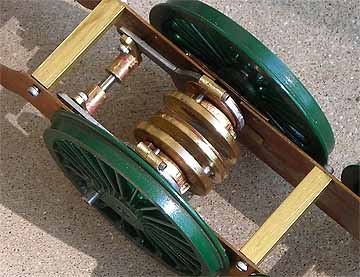
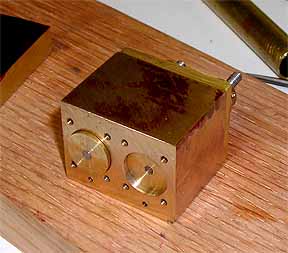
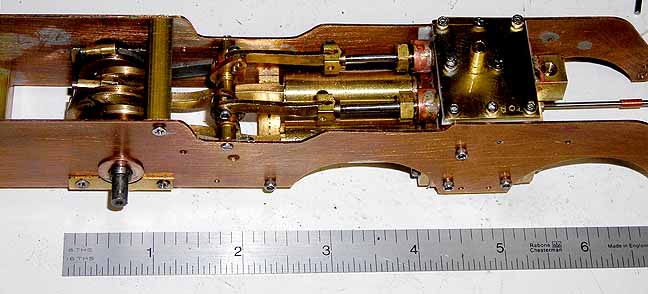





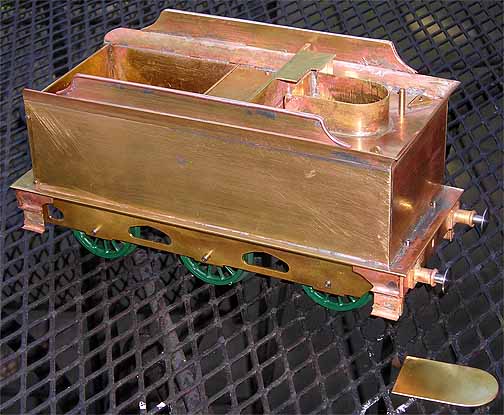

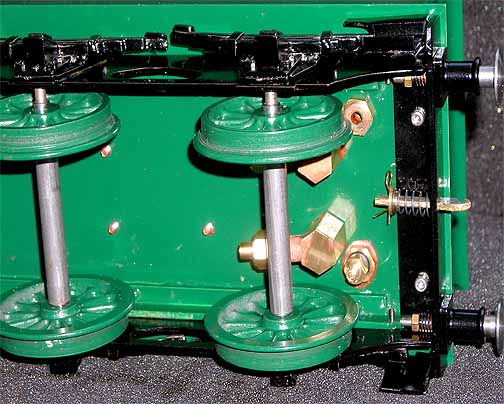
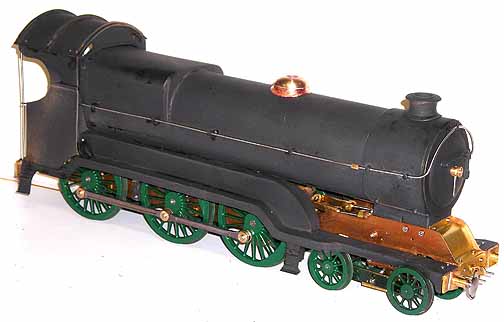

Back to Sidestreet Bannerworks
Click here to find out how your engine can be featured!
This page and its contents
Copyright Sidestreet Bannerworks, 2012